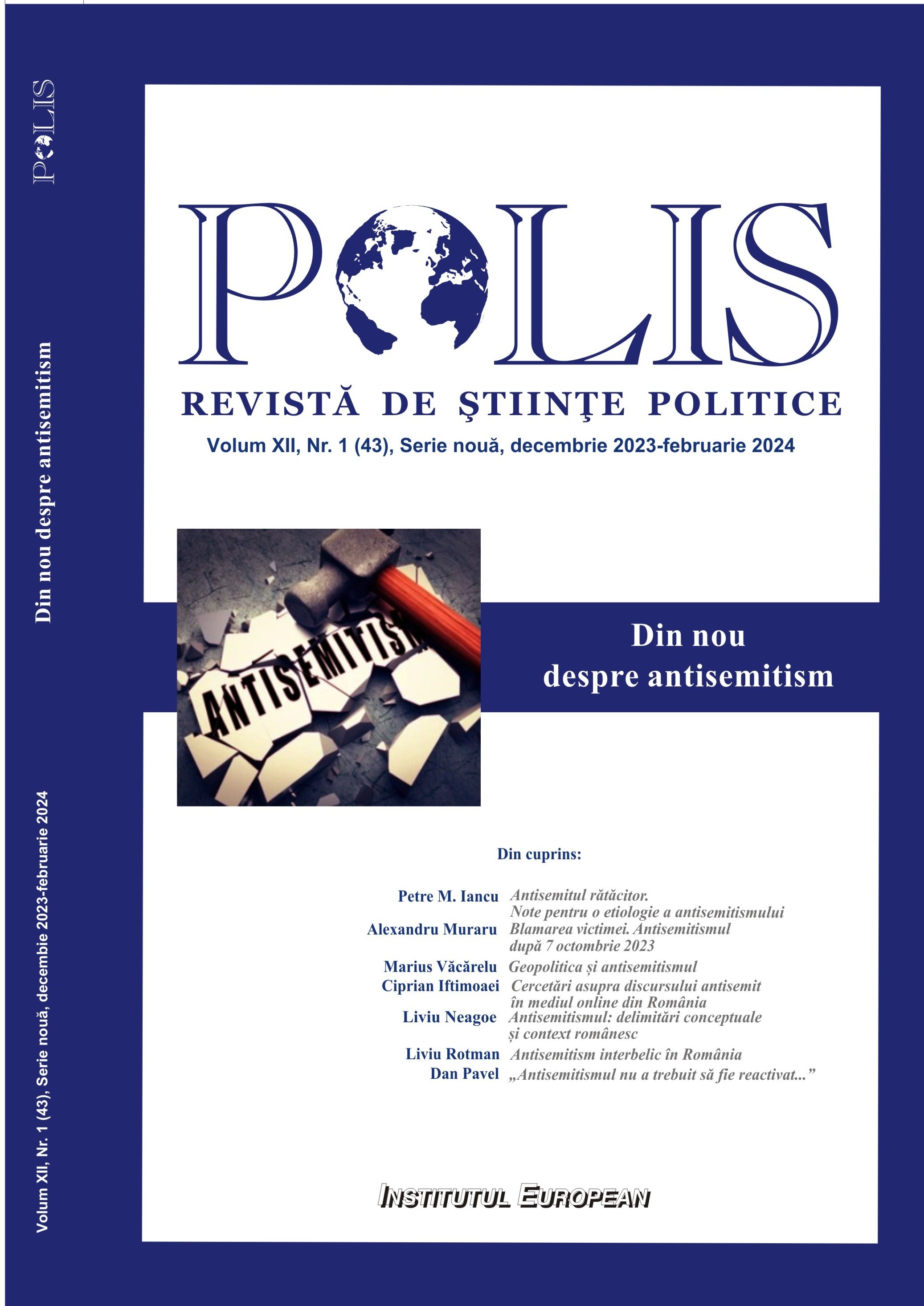De ce persistă manifestările antisemite în societatea românească și
după emigrarea în masă a evreilor?
Gânduri, amintiri și ipoteze
Why do anti-Semitic manifestations persist in Romanian society
even after the mass emigration of Jews ?
Thoughts, memories and hypotheses
Author(s): Anton CarpinschiSubject(s): Politics / Political Sciences, Jewish studies
Published by: Editura Institutul European
Keywords: captive thinking; recognition culture; spirit of interculturality; conceptual networks; pragmatic-discursive scenario; dynamics of composite identities vs dialogue of connective identities;
Summary/Abstract: Trying to answer a question that might seem redundant to some of us – „why do anti-Semitic manifestations persist in Romanian society even after the mass emigration of Jews?” – this essay proposes a hypothesis according to which anti-Semitic manifestations appear and are maintained, mainly, through the joint action of two major psychocultural diseases: the syndrome of captive thinking and the absence of a culture of recognition. In support of this hypothesis, the pragmatic-discursive scenario designed at the confluence of applied philosophy, cognitive psychology and cultural studies is a personalized reflexive approach with autobiographical echoes that reveal, from the perspective of common sense morality, how absurd is any manifestation of anti-Semitism, racism, xenophobic nationalism and theocratic fundamentalism maintained by captive thinking syndrome and the absence of a culture of recognition.
Journal: Polis. Journal of Political Science
- Issue Year: XII/2024
- Issue No: 43
- Page Range: 197-217
- Page Count: 20
- Language: Romanian

